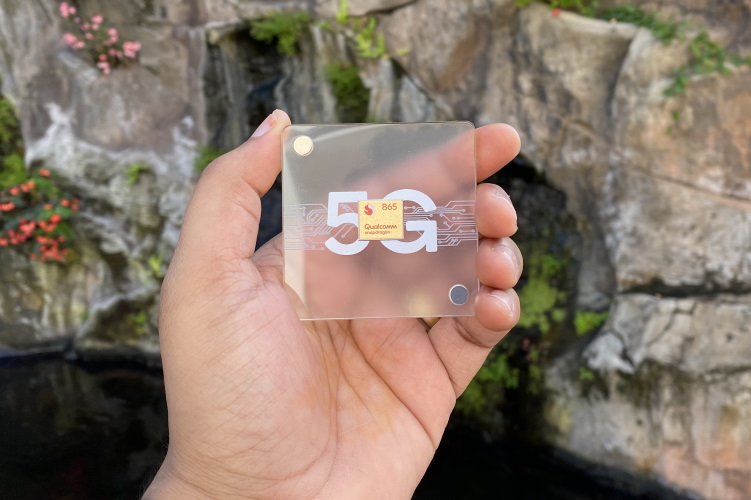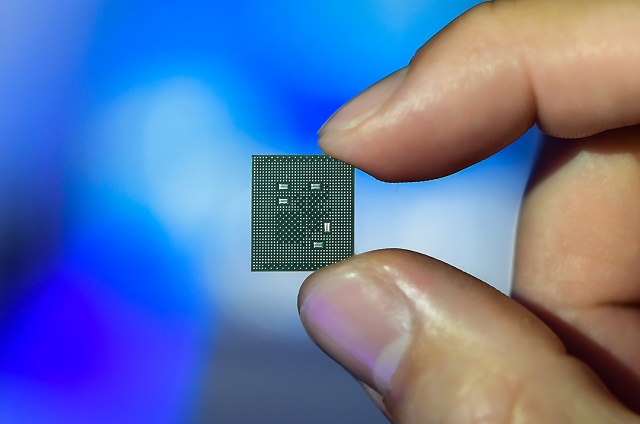Snapdragon 865 Brings Support for 144Hz Display, 8K Video Recording, and More
[the_ad id='1307']

Yesterday, Qualcomm unveiled its newest flagship chipset, the Snapdragon 865, on stage at its Snapdragon Tech Summit in Hawaii. The chipmaker took the veil off its new chipset during the first keynote address but didn’t shed light on many technical details. Well, the chipmaker has today revealed everything about the Snapdragon 865 chipset, so let’s not waste time and dive straight in.
Starting off with the basics, Qualcomm Snapdragon 865 is an eight-core chipset based on the 7nm architecture. It features the new Kryo 585 CPU and Adreno 650 GPU, both of which offer up to 25% overall performance gain over the previous generation components.
It also integrates a new 5th-gen AI Engine, which is capable of delivering a whopping 15 TOPS of AI performance. It’s two times more powerful than the AI Engine found in the Snapdragon 855 chipset. There’s also a new Hexagon Tensor Accelerator in tow, which is 35% more power efficient and offers 4x better performance, to enable real-time language translations, faster Google Assistant, and other AI capabilities.
While the CPU cores onboard are new, Qualcomm has paired its existing Snapdragon X55 modem-RF system with the Snapdragon 865 chipset. The chipmaker touts that its modem surpasses most wired connections and can deliver download speeds of up to 7.5 Gbps. The X55 modem “supports all key regions and bands including mmWave and sub-6 in both TDD and FDD frequencies.”
One thing that may irk you out though is the fact Qualcomm will sell the Snapdragon 865 chipset and X55 modem as a package to phone makers. Those looking to build a flagship phone will have to get the X55 modem, which is backwards compatible with LTE, 3G, and 2G networks, along with the chipset. Qualcomm won’t bundle any other modem with the Snapdragon 865. There’s an upside to this though – all flagship phones coming to regions without 5G connectivity support are still future-proof. They will support 5G networks once your country supports them.

Snapdragon 865 also supports Qualcomm’s new FastConnect 6800 mobile connectivity subsystem. It has received Wi-Fi 6 certification from the Wi-Fi Alliance. It supports the latest Wi-Fi 6 standards, aptX Voice to wirelessly support Super Wide Band (SWB) voice over Bluetooth, along with aptX Adaptive and TrueWireless Stereo Plus technologies.
Moving on, one of the things that caught my eye will have to be the Snapdragon 865’s camera capabilities. The new Spectra 480 Image Signal Processor (ISP) operates at a mind-blowing speed of up to 2 Gigapixels per second and supports cameras up to 200MP (which means we could see an even higher-megapixel sensor than the 108MP one soon). Snapdragon 865 chipset also supports 8K @ 30fps video recording, 4K HDR, and unlimited HD 960fps slo-mo videos.
Qualcomm is also pushing for desktop-grade gaming on the Snapdragon 865 chipset, so there’s support for up to 144Hz display panels in tow. We have already seen phones with a 120Hz display like the Asus ROG Phone 2. Maybe the ROG Phone 3 will feature an even higher refresh rate. Snapdragon Elite Gaming has been upgraded to now support Desktop Forward Rendering (allows developers to add desktop-quality lighting to the games) and Adreno Updateable GPU Drivers. Yes, drivers. You will soon be able to have complete control over your device’s GPU settings and individual game’s graphics as well.
Qualcomm says that smartphones backed by the Snapdragon 865 are expected to make their way to the market starting in Q1 2020 – most likely with the Galaxy S11 series. We already know that Xiaomi’s flagship Mi 10 will be one of the first few devices to launch with this new chipset in tow. Are you ready for an onslaught of new flagship smartphones and a 5G wave? Let us know in the comments below.
[the_ad id='1307']
Source link
[the_ad id='1307']